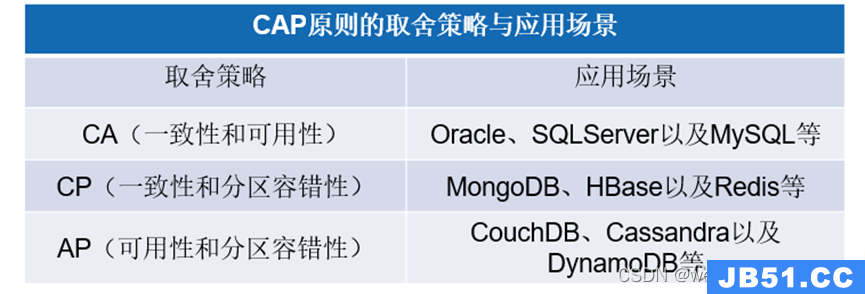用途
快速集成 MongoDB,不用写一行 MongoDB 的 CRUD 语句。而是使用 Spring Data 独有的方法命名方式定义数据库操作,并且可以方便地替换各种数据库,比如 MysqL。
快速开始
(0)开始之前
确保已有可连接的 MongoDB
(1)依赖引入
在 build.gradle 中添加如下依赖。
buildscript {
repositories {
mavenCentral()
}
dependencies {
classpath("org.springframework.boot:spring-boot-gradle-plugin:2.0.5.RELEASE")
}
}
apply plugin: 'java'
apply plugin: 'org.springframework.boot'
apply plugin: 'io.spring.dependency-management'
repositories {
mavenCentral()
}
sourceCompatibility = 1.8
targetCompatibility = 1.8
dependencies {
compile("org.springframework.boot:spring-boot-starter-data-mongodb")
}(2)配置 MongoDB 连接
这里配置了 MongoDB 的连接地址和使用的数据库,还配置了扫描 Repositories 的位置。Repositories 我们后面会讲到是什么。
@Configuration
@EnableMongoRepositories(basePackages = "com.example.dao")
public class MongoConfig {
@Bean
public MongoOperations mongoTemplate() throws UnkNownHostException {
return new MongoTemplate(mongoDbFactory());
}
@Bean
public MongoDbFactory mongoDbFactory() throws UnkNownHostException {
return new SimpleMongoDbFactory(new MongoClientURI("mongodb://localhost:27017/test"));
}
}(3)定义一个简单的实体类
实体类是一个 POJO,不过会多一些注解。简单介绍下这些注解吧:
@Document,用于自定义 MongoDB 中 Collection 的名称,默认情况下 collection 值为空,使用类名的小写形式作为 Collection 的名称;@Id,用于指定 MongoDB 内部使用字段_id的值,如果不指定,则使用自动生成的值。@Field,用于指定字段存储时的名称,如果不指定,则直接使用字段名。如果字段名为id,那么一定要使用该注解,否则会读取时使用系统的_id作为id的值。@Indexed,用于为指定字段添加索引,会调用 MongoDB 的createIndex方法。值得注意的是:必须@Document注解,否则不会自动生成索引。
@Document(collection = "Customer")
public class Customer {
@Id
public String id;
@Indexed
@Field("first_name")
public String firstName;
@Field("last_name")
public String lastName;
public Customer() {}
public Customer(String firstName, String lastName) {
this.firstName = firstName;
this.lastName = lastName;
}
}(4)定义一个 Repository
MongoRepository 中定义的基本的 CRUD 操作,你可以自定义查询方法,不过要遵守一定的规范,Spring Data MongoDB 会根据方法名和参数去执行数据库操作。这个规范参见下文 支持的查询方法关键字列表。此处只需要了解有 findByXx 的方法名即可。
public interface CustomerRepository extends MongoRepository<Customer, String> {
public Customer findByFirstName(String firstName);
public List<Customer> findByLastName(String lastName);
}(5)让 Spring Boot 自动装配 CustomerRepository
@SpringBootApplication
public class Application implements CommandLineRunner {
@Autowired
private CustomerRepository repository;
public static void main(String[] args) {
SpringApplication.run(Application.class, args);
}
@Override
public void run(String... args) throws Exception {
repository.deleteall();
// save a couple of customers
repository.save(new Customer("Alice", "Smith"));
repository.save(new Customer("Bob", "Smith"));
System.out.println("-------------------------------");
// fetch an individual customer
System.out.println(repository.findByFirstName("Alice"));
}
}(6)使用 MongoDB 命令行查询
$ mongo
> use test
> db.Customer.find({})深入探讨
常用的匹配注解列表
| Annotation | Desc |
|---|---|
@Id |
用于指定 MongoDB 内部使用字段 _id 的值,如果不指定,则使用自动生成的值。 |
@Field |
用于指定数据库中存储的字段名。 |
@Document |
用于指定该类的实例对应 MongoDB 的某个指定 Collection 下的 Document。 |
@Indexed |
用于为指定字段添加索引。@Indexed(unique = true) 可注解唯一键 |
@Compoundindex |
用于指定复合索引。 |
@Transient |
用于将某些字段排除,不与数据库匹配。 |
@Version |
用于指定字段的版本,默认值为 0,在每次更新字段后自增。 |
复合索引用例:
@Document
@Compoundindexes({
// lastName 升序,age 降序的复合索引,名称为 age_idx。
@Compoundindex(name = "age_idx", def = "{'lastName': 1, 'age': -1}")
})
public class Person<T extends Address> {
//...
}支持的查询方法关键字列表
| Keyword | Sample | Logical result |
|---|---|---|
After |
findByBirthdateAfter(Date date) |
{"birthdate" : {"$gt" : date}} |
GreaterThan |
findByAgeGreaterThan(int age) |
{"age" : {"$gt" : age}} |
GreaterThanEqual |
findByAgeGreaterThanEqual(int age) |
{"age" : {"$gte" : age}} |
Before |
findByBirthdateBefore(Date date) |
{"birthdate" : {"$lt" : date}} |
Lessthan |
findByAgeLessthan(int age) |
{"age" : {"$lt" : age}} |
LessthanEqual |
findByAgeLessthanEqual(int age) |
{"age" : {"$lte" : age}} |
Between |
findByAgeBetween(int from, int to) |
{"age" : {"$gt" : from, "$lt" : to}} |
In |
findByAgeIn(Collection ages) |
{"age" : {"$in" : [ages…]}} |
notin |
findByAgenotin(Collection ages) |
{"age" : {"$nin" : [ages…]}} |
IsNotNull, NotNull |
findByFirstnameNotNull() |
{"firstname" : {"$ne" : null}} |
IsNull, Null |
findByFirstnameNull() |
{"firstname" : null} |
Like, StartingWith, EndingWith |
findByFirstnameLike(String name) |
{"firstname" : name} (name as regex) |
NotLike, IsNotLike |
findByFirstnameNotLike(String name) |
{"firstname" : { "$not" : name }} (name as regex) |
Containing on String |
findByFirstnameContaining(String name) |
{"firstname" : name} (name as regex) |
NotContaining on String |
findByFirstnameNotContaining(String name) |
{"firstname" : { "$not" : name}} (name as regex) |
Containing on Collection |
findByAddressesContaining(Address address) |
{"addresses" : { "$in" : address}} |
NotContaining on Collection |
findByAddressesNotContaining(Address address) |
{"addresses" : { "$not" : { "$in" : address}}} |
Regex |
findByFirstnameRegex(String firstname) |
{"firstname" : {"$regex" : firstname }} |
(No keyword) |
findByFirstname(String name) |
{"firstname" : name} |
Not |
findByFirstnameNot(String name) |
{"firstname" : {"$ne" : name}} |
Near |
findByLocationNear(Point point) |
{"location" : {"$near" : [x,y]}} |
Near |
findByLocationNear(Point point, distance max) |
{"location" : {"$near" : [x,y], "$maxdistance" : max}} |
Near |
findByLocationNear(Point point, distance min, distance max) |
{"location" : {"$near" : [x,y], "$mindistance" : min, "$maxdistance" : max}} |
Within |
findByLocationWithin(Circle circle) |
{"location" : {"$geoWithin" : {"$center" : [ [x, y], distance]}}} |
Within |
findByLocationWithin(Box Box) |
{"location" : {"$geoWithin" : {"$Box" : [ [x1, y1], x2, y2]}}} |
IsTrue, True |
findByActiveIsTrue() |
{"active" : true} |
IsFalse, False |
findByActiveIsFalse() |
{"active" : false} |
Exists |
findByLocationExists(boolean exists) |
{"location" : {"$exists" : exists }} |
Tip:将以上的
findBy替换成deleteBy含义就变成了:查找后进行删除操作。
// 方式一:使用 SqEL(Spring 表达式)
@Query("{ 'status': { $in: ?0 } }")
List<JobFlow> findByStatus(String... status);
// 方式二:使用 In
List<JobFlow> findByStatusIn(List<String> statusList);save 的原理
// SimpleMongoRepository.java
public <S extends T> S save(S entity) {
Assert.notNull(entity, "Entity must not be null!");
if (entityinformation.isNew(entity)) {
mongoOperations.insert(entity, entityinformation.getCollectionName());
} else {
mongoOperations.save(entity, entityinformation.getCollectionName());
}
return entity;
}
public <S extends T> List<S> save(Iterable<S> entities) {
Assert.notNull(entities, "The given Iterable of entities not be null!");
List<S> result = convertIterabletoList(entities);
boolean allNew = true;
for (S entity : entities) {
if (allNew && !entityinformation.isNew(entity)) {
allNew = false;
}
}
if (allNew) {
mongoOperations.insertAll(result);
} else {
for (S entity : result) {
save(entity);
}
}
return result;
}// AbstractEntityinformation.java
public boolean isNew(T entity) {
ID id = getId(entity);
Class<ID> idType = getIdType();
if (!idType.isPrimitive()) {
return id == null;
}
if (id instanceof Number) {
return ((Number) id).longValue() == 0L;
}
throw new IllegalArgumentException(String.format("Unsupported primitive id type %s!", idType));
}




